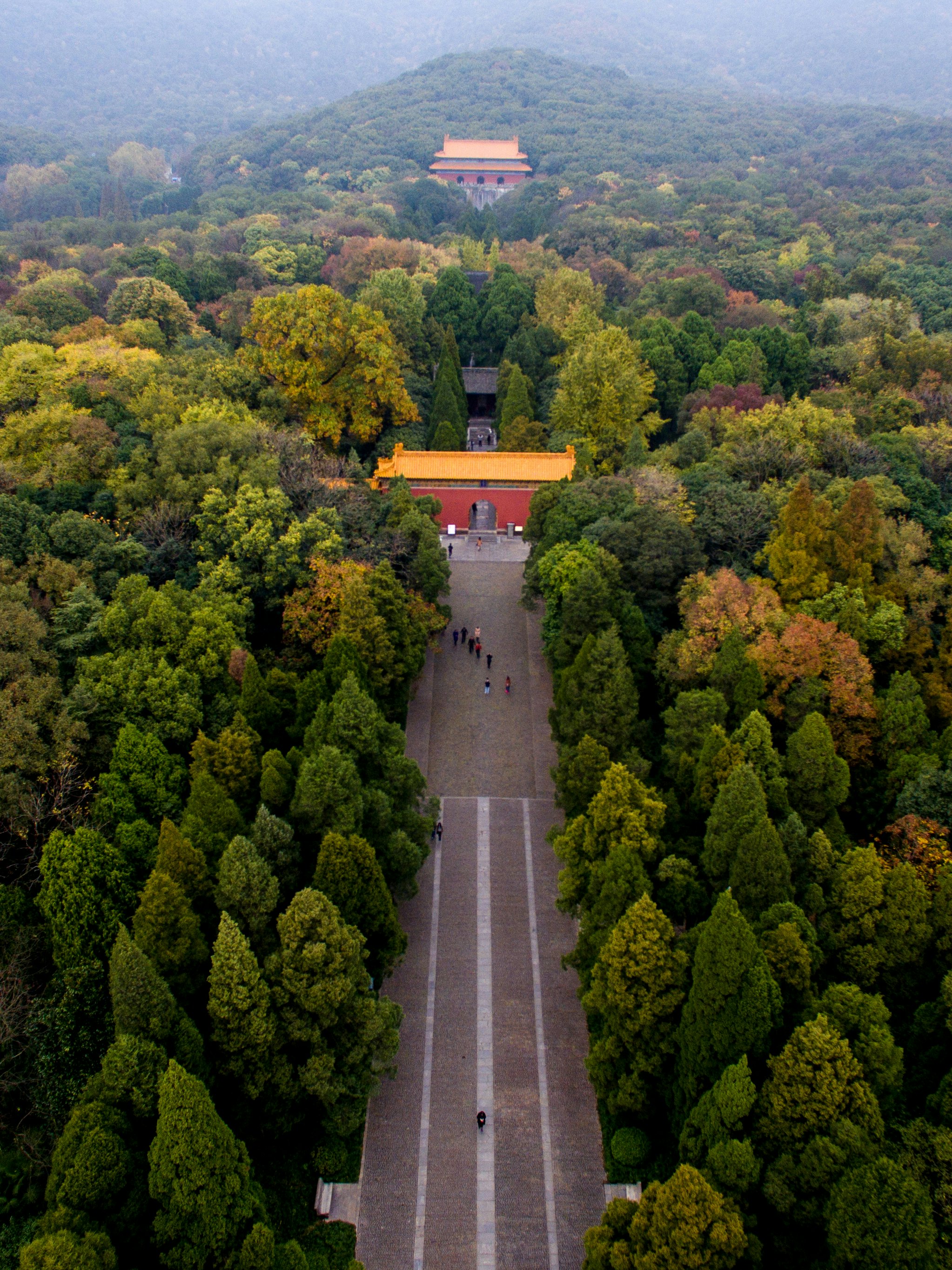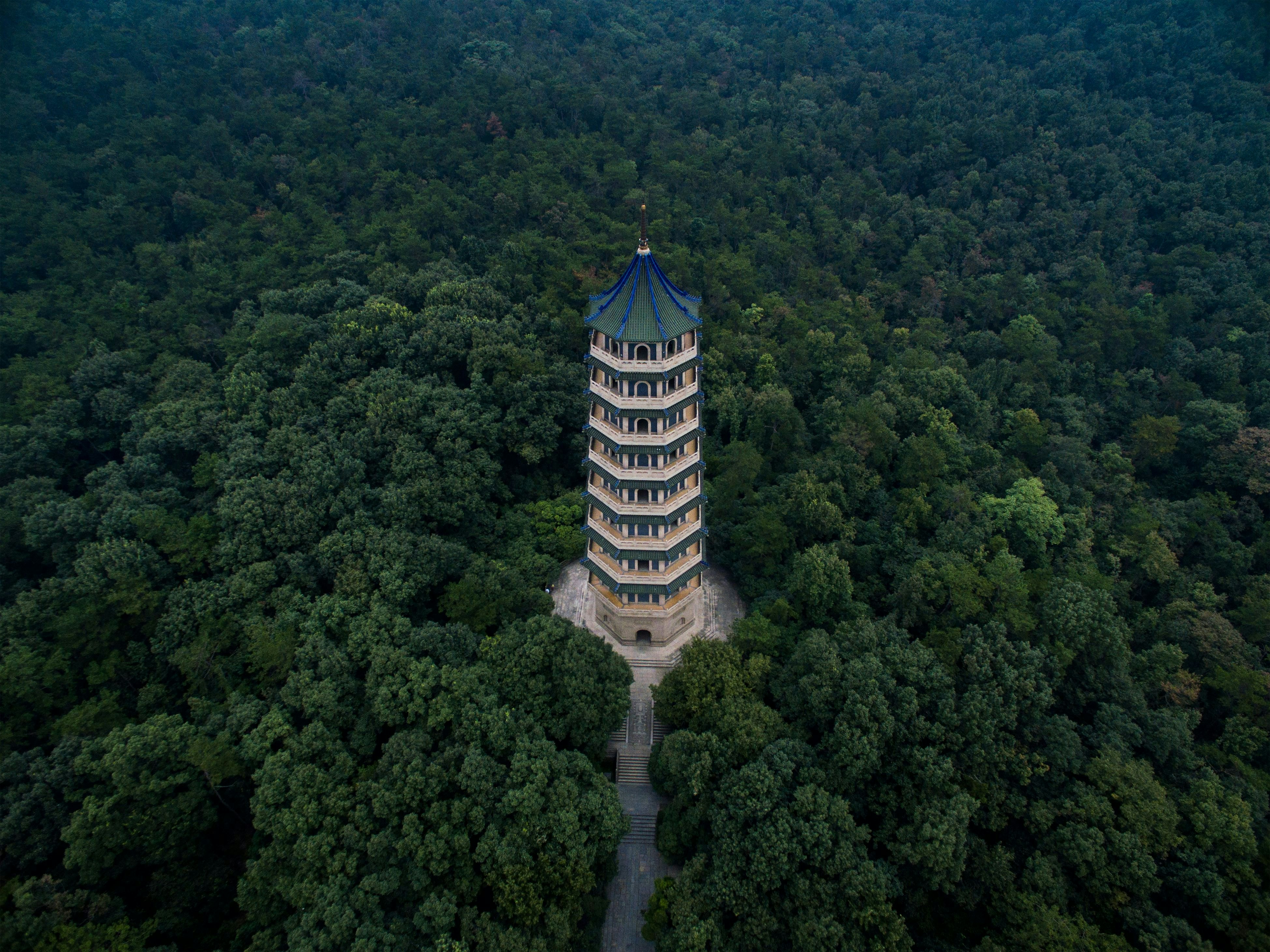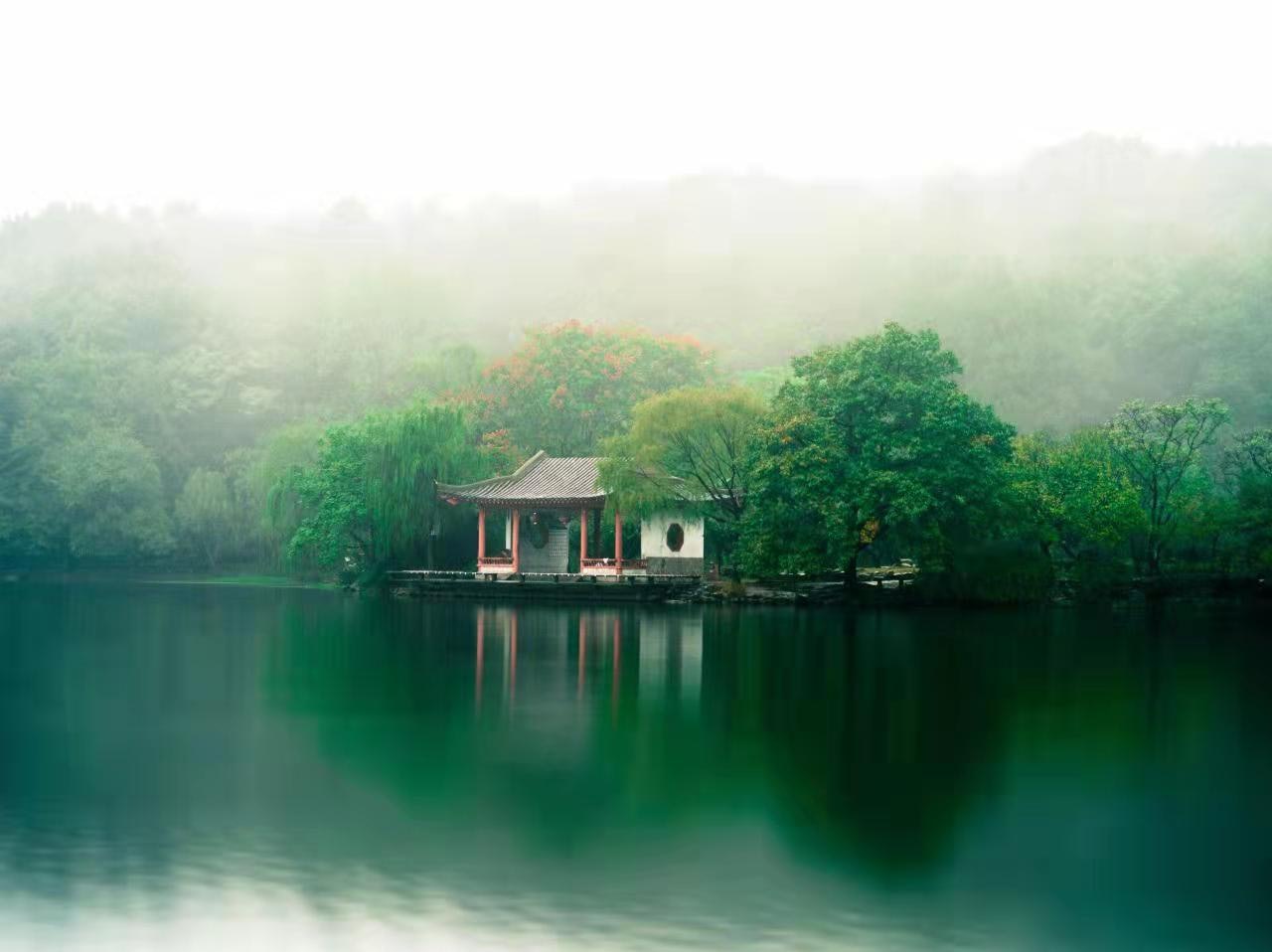
The 30 best countries, cities and regions to visit in 2025
Sponsored by

Mar 7, 2022 • 7 min read

© Courtesy of Nanjing Culture and Tourism Bureau
Nanjing is known as the “Ancient Capital of Six Dynasties,” having served as the center of dynasties and kingdoms throughout its centuries-long history. Zhongshan Mountain is the center of this legacy. The mountain is abundant with sacred historical sites and cultural wonders, from temples to imperial mausoleums. These architectural marvels, artistry, and workmanship are appreciated by countless travelers today. Notably, the Ming Xiaoling Tomb and Sun Yat-Sen’s Mausoleum are some of China’s most impressively constructed historical sites.
Also referred to as “Purple Mountain,” thanks to the purple-hued mist that envelopes its peaks at dawn and dusk, it warrants a spot high on any Nanjing bucket list. At least a day should be dedicated to exploring its offerings. For those planning a trip to China’s old capital, here are six places on sacred Zhongshan Mountain worth factoring into the itinerary.

The Ming Xiaoling Tomb is one of the largest imperial tombs in China, where Zhu Yuanzhang – the founder of the Ming Dynasty – is believed to be buried with his wife, Queen Ma.
Zhu Yuanzhang’s tomb and its verdant surroundings have been impressively preserved. At the entrance of the grounds are the Great Golden Gates, where a large stone bixi (a mythical Chinese tortoise-like animal) welcomes visitors. The bixi carries a plaque on its back, inscribed with the emperor’s merits. The walkway that leads to the tomb, known as “The Sacred Way,” is lined with pairs of enormous carved stone animal statues. Lions, elephants, horses, camels, and more collectively guard the tomb in pursuit of warding off any evil spirits. Tradition continues to carry through the architecture, as The Sacred Way path takes a sharp turn; Chinese mythology states that evil spirits can only travel in straight lines.
The central area comprises a series of manicured courtyards and pavilions, as well as “The Hall of Prominent Favor,” which showcases a portrait of the emperor and a collection of Ming Dynasty relics. Moving further in, visitors will find a mammoth, unexcavated burial mound where the emperor’s body is said to rest. The 1,300-foot-wide mound is surrounded by grand, castle-like walls, with stairs that lead to a terrace that tops the mound. Known as the “Soul Tower,” visitors can conclude their visit by walking up for an elevated view of the grounds.
Dr. Sun Yat-Sen, honored as the “Father of Modern China,” requested that his burial site be at Zhongshan Mountain. The 20-acre mausoleum area unites traditional architecture and incredible forest scenery. Sun Yat-Sen’s Mausoleum is undoubtedly a must-visit site when in Nanjing.
From an aerial viewpoint, the mausoleum presents itself in the shape of an alarm bell. It’s an apt metaphor for the time and devotion Sun Yat-Sen gave to the Chinese people. He spearheaded the revolution and independence of China and served as the first President of the Republic of China.

The mausoleum’s architecture reflects Sun Yat-Sen’s life, uniting Chinese and Western ideologies. The primary style is that of Chinese classical palace architecture, which can be seen in shape of the roof. At the same time, the building also incorporates some Western design elements. Today, the mausoleum is seen as a significant piece of Chinese modern architecture.
The memorial hall is mainly white with a striking blue roof, meant to give visitors a feeling of calm. Three doors lead into the hall, with a message inscribed above each. The first reads “nationalism,” the second “people’s rights,” and the third “people’s livelihood” – elements that founded Sun Yat-Sen’s work.
Visitors will find a pailou or memorial arch at the site’s entrance. It’s inscribed with two gold characters that stand for “fraternity.” A lengthy, tree-lined path guides the way to the formal gate, distinctively marked by three large arched entries. To reach Dr. Sun Yat-Sen’s memorial chamber and crypt, visitors must climb a stairway of 392 steps, broken up into eight platforms. The 392 stairs represent the population of China at the time, estimated to be 392 million, and the eight platforms stand for Sun Yat-Sen’s Three Principles of the People and the five branches of the Chinese government, both ideas inspired by his political theory. A marble statue of the doctor awaits at the top.
On the eastern side of Zhongshan Mountain is the Linggu Temple, an expansive area submerged in the forest with freshwater springs trickling through. The temple itself was built in the Ming Dynasty and named by emperor Zhu Yuanzhang himself. Today, the temple remains an active place of worship.

It’s home to the Beamless Hall, one of Nanjing’s most historically significant and architecturally unique structures. The hall was built in 1382 out of a mixture of brick and stone but has absolutely no beam support - an architectural wonder that may mildly puzzle architects that visit it today. A memorial hall is also part of the temple area, built to honor Xuan Zang, the Buddhist monk who brought Buddhist scriptures to China following a pilgrimage to India. Linggu Temple is accessible via walking trails from the Ming Xiaoling Tomb.
Chinese folklore says that you’ll be granted a wish if you bow to God while a meteor is shooting across the sky. The modern-day prevalence of this legend shows how integral astronomy is to modern Chinese culture. Nanjing’s Purple Mountain Observatory was a pioneer in its development.
The observatory was China’s first modern astronomical institute. Referred to as the ‘cradle of modern astronomy in China,’ most subdisciplines of Chinese astronomy were established here.

Visitors will also find the Nanjing Astronomy and History Museum at the observatory, which features a collection of rare apparatuses, an amazing library of books, and beautiful white-domed observatory architecture. Completed and first operational in 1934, calibers and telescopes that were once world-leading technologies are still on display at the observatory. It’s also equipped with modern technologies ideal for observing the sun, moon, stars, planets, and satellites.
On display outside are several large and stunningly ornate pieces of bronze astronomical equipment. These include the Armillary Sphere – designed to determine the position of the stars – and the Simplified Armillary Sphere, which did the same with more efficiency and precision. The Armillary Sphere is held up by four dragons in Ming Dynasty-style architecture.
To the south of the observatory is the Zhongshan Botanical Garden, one of four major botanical gardens in the country. Its lawns and lake areas host more than 3000 species of decorative and medicinal plants. It’s not just beautiful — it’s also a key research center dedicated to China’s central and northern subtropical plants.
The garden is divided into two sections. The north is the older part, while the south features large-scale greenhouses built in 1999. The greenhouse rooves are cleverly shaped like three large leaves from an aerial perspective.
It’s a popular spot for families, couples, and avid nature photographers. Head here for a blissful afternoon, immersed in green spaces that will linger long in the mind post-visit.

For those in the mood to try wild swimming, put Zixia Lake on the list. The secluded and peaceful lake is encircled by forest foliage, and visitors will find people enjoying the water year-round. That goes for winter too, where the brave elderly locals throw on their swim gear and hope to reap the health benefits of cold-water swimming.
Pink and white plum blossom sweeps Zhongshan Mountain in the springtime, and it’s celebrated with a festival that draws travelers from all over the country. About 35,000 plum trees make up Zhongshan Mountain’s plum blossom hill, which is home to an impressive exhibit of bonsai plum trees, as well as what is believed to be China’s oldest plum tree, the “King of Plum Blossoms,” which is more than 400 years old. A performance stage is set up during the festival, and traditional musicians, singers, and dancers collectively add to the joyful celebration.

There are multiple ways to get to Zhongshan Mountain, and the route you take depends on which sites you are planning to see and the order of your itinerary. We recommend starting at Ming Xiaoling Tomb, accessible via Metro Line 2 to Muxuyuan Station. From there, getting around is easy, with sightseeing buses connecting different scenic areas and sites.
Perhaps the most important tip is wearing comfortable walking shoes! Walking on a mixture of roads, and grass, plus up hundreds of stairs and back down, requires the proper support. Pack a backpack with plenty of water and snacks. It’s essential to check the weather before heading to the mountain; snowy days may require shoes with increased grip to prevent slipping on snow, while hotter months call for sun protection
As a travel entertainment and inspirational media outlet, we sometimes incorporate brand sponsors into our efforts. This activity is clearly labeled across our platforms.
This story was crafted collaboratively between Nanjing Municipal Bureau of Culture and Tourism and Lonely Planet. Both parties provided research and curated content to produce this story. We disclose when information isn’t ours.
With sponsored content, both Lonely Planet and our brand partners have specific responsibilities:
Determines the concept, provides briefing, research material, and may provide feedback.
We provide expertise, firsthand insights, and verify with third-party sources when needed.